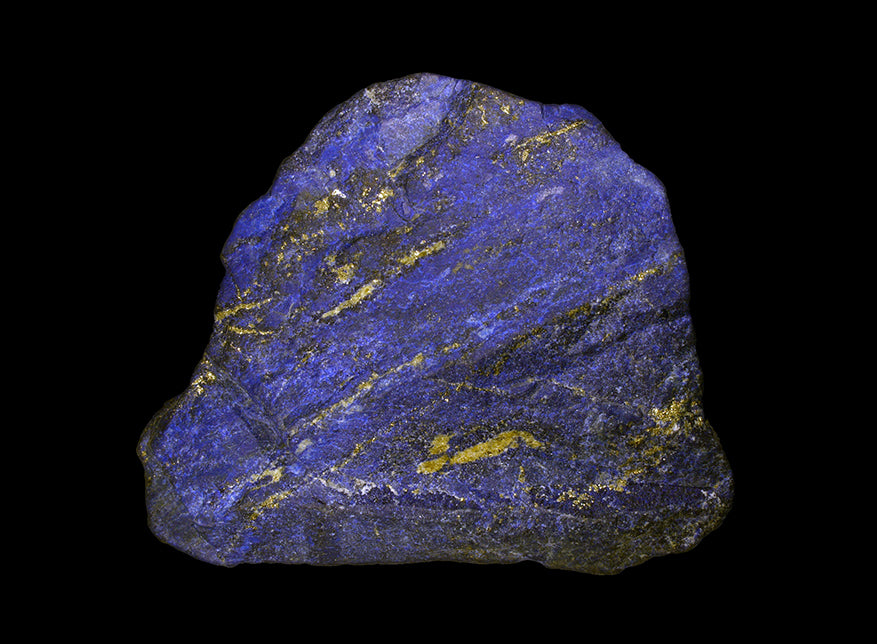LAPIS LAZULI

Lapis Lazuli is one of the oldest opaque gemstones in history, more than 6,500 years old. This stone's two-part name comes from two different cultures: Lapis is a Latin word meaning 'stone', while Lazuli comes from the Persian word lazhuward, meaning 'blue'. Lapis Lazuli is not an element or a mineral, it is a rock containing multiple minerals: lazurite, diopside, calcite, pyrite and more.
Biblical scholars believe that references in the Old Testament to 'sapphire' actually indicate Lapis Lazuli, as the sapphire gemstone was not known in the Middle East before the Roman Empire. Beloved by the ancient Egyptians, Babylonians, Minoans, Chinese, Greeks and the Romans; this deep blue stone has been used in art through the ages. Lapis was famously used in the burial mask of King Tutankhamen, inlaid in combination with turquoise and carnelian into bright gold; Cleopatra was known to use ground lapis lazuli as eyeshadow; and Marco Polo wrote about lapis lazuli mines in 1271.
The Sumerians believed that the spirit of their gods lived within the stone, while the ancient Egyptians saw it as a symbol of the night sky. Since the earliest of times, lapis lazuli has been associated with strength and courage, royalty and wisdom, intellect and truth.
From antiquity, lapis lazuli has been worn in the belief that it will ward off evil. In ancient Egypt, it was powdered and worn about the eyes to improve eyesight. Today, it is considered by some to aid both vision and hearing and to improve headaches, anxiety and disorders of the skin.


